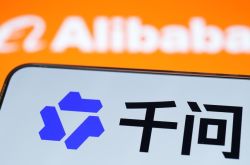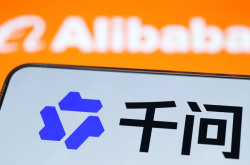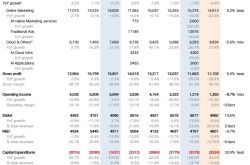“QianWen Panic” Sweeps Silicon Valley: Who's Shaking?
![]() 11/20 2025
11/20 2025
![]() 543
543
In November, Silicon Valley finds itself gripped by what overseas social media has dubbed "QianWen Panic," a sentiment that has spread from the tech sector to a broader audience.
Recently, the UK’s Financial Times reported that Washington, in a memo, accused Alibaba of "providing technology support to the Chinese military aimed at the United States." Despite the lack of concrete evidence, Alibaba swiftly issued a stern rebuttal, labeling the accusation a "malicious PR campaign."
However, this groundless attack warrants deeper consideration, as it highlights the significant impact of China’s large-scale model technology on the technological hegemony of the U.S.
As Alibaba’s QianWen Qwen open-source model surpasses Meta’s Llama in downloads, becoming the preferred choice for developers worldwide, and as the QianWen APP, which is fully comparable to ChatGPT, makes a high-profile entry into the AI-to-consumer market, the dynamics of Sino-U.S. AI competition have quietly shifted. The narrative has moved from North America setting the terms and China following suit, to an equal dialogue between two distinct systems.
Panic Emerges: Closed-Source High Debt vs. Open-Source Ecosystem Expansion
This is not the first time China’s AI advancements have drawn significant overseas attention.
When DeepSeek disrupted the "money-burning race" of large models with its low-compute, high-output approach earlier this year, Silicon Valley may have sensed a looming threat. Now, QianWen’s steady, incremental growth is directly striking at the core anxieties of the U.S. AI industry, even reaching the White House.
A deeper analysis reveals that this anxiety stems from a clash between two technological paths:
Historically, the U.S. AI industry has relied on a closed-source ecosystem to build vertical barriers characterized by "high compute → high costs → high pricing." OpenAI charges hefty API fees for GPT-4, while Google’s Gemini and Anthropic’s Claude follow closed-source, paid models. This approach was once seen as inevitable, with key players attempting to monopolize model capabilities to control the AI narrative.
Yet, the pressures on this closed-source model are mounting. On one side, commercial growth remains limited, and profitable pathways are still being explored. On the other, financing and investments are swelling rapidly.
Consider that AI-related bond issuances now account for over a quarter of the U.S. corporate debt net supply this year, with Meta alone raising $30 billion in a single refinancing. This debt-leveraged bet on AI’s future exposes the entire ecosystem to extreme liquidity risks, making it difficult to reverse course.
In contrast, China’s AI industry is demonstrating effectiveness through a horizontal path characterized by "cost-reducing compute → open-source diffusion → deep scenario penetration." Currently, Alibaba’s Qwen series has propelled this path to new heights:
To date, QianWen Qwen leads globally in downloads and derivative models, surpassing Meta’s Llama series as the top open-source model. The latest Qwen3 matches GPT-5 and Gemini 2.5-Pro in performance, supporting 119 languages.
In terms of real-world applications, Alibaba’s QianWen APP, based on the Qwen3 model, recently launched a public beta for consumers, receiving positive initial feedback. An international version will soon follow, directly competing with ChatGPT for users by leveraging Qwen’s global influence. Given Alibaba’s robust ecosystem, the app’s commercial potential in e-commerce customer service, travel planning, and office productivity is substantial.

More critically, this open-source model freely provides top-tier model capabilities, directly challenging North America’s closed-source, paid ecosystem. Former Google CEO Eric Schmidt warned that under cost and technical feasibility pressures, most countries may turn to China’s open-source technologies, risking the U.S. loss of sole AI ecosystem dominance.
Ultimately, Silicon Valley’s panic reflects how China’s AI-led open-source diffusion threatens the foundation of U.S. technological leadership and price monopolies, with its prized pricing power now facing potential collapse.
QianWen’s Early Success Shatters North American AI Dreams
More fundamentally, the White House’s groundless accusations reveal North America’s deep-rooted tech hegemony mindset. From Microsoft defining PC operating systems to Google reshaping information distribution and Apple pioneering mobile ecosystems, the U.S. has long dominated tech paradigms, fostering an industry belief in "betting on definers, not followers."
This historical inertia led U.S. tech giants to firmly believe that global tech paradigms are theirs to define—including this AI revolution.
Thus, U.S. core capital is investing in this transformation with unprecedented consensus, aiming to lock in technological paradigms and definition rights for the next two decades.
However, the emergence and spread of "QianWen Panic" signal that this new script will no longer be written by a single power. For the first time, in AI—a disruptive technology reshaping production relations—China’s tech industry stands at a new starting point of "equal capabilities, ecosystem confrontation."
First, in terms of capability, according to Stanford University’s 2025 AI Index Report, the performance gap between top Chinese and U.S. models had narrowed to just 0.3% by the end of last year.
Second, this breakthrough stems from the full-stack awakening of China’s AI industrial chain. Alibaba’s full-stack layout exemplifies this awakening.
After sixteen years of accumulation, Alibaba has developed a full-stack capability system covering underlying compute, model systems, and application ecosystems, making it one of the few global tech giants with integrated capabilities in large models, cloud computing, chips, and applications. This year, Alibaba further announced plans to invest over 380 billion yuan ($52 billion) in cloud and AI infrastructure over the next three years.
Within this system, AI fully supports Alibaba’s ecosystem: on Taobao and Tmall, AI aids merchant operations, content creation, and user services; on Fliggy, "Ask Anything" combines AI with travel scenarios to provide professional, actionable itineraries; on DingTalk, AI spreadsheets support operations on tables with tens of millions of rows, significantly boosting office efficiency. These scenarios are not mere "model tests" but validations of real commercial value.
With these inherent advantages, the launch of QianWen APP—Alibaba’s core product for the "future battle of the AI era"—was inevitable. Alibaba has taken the lead in opening this fiercely contested AI super-entry point coveted by global tech giants.
Fear Before the Fight: Alibaba AI’s Strong Ecosystem Output Intensifies U.S. Anxieties
Alibaba AI’s strong ecosystem output directly intensifies U.S. AI industry anxieties over closed-source application adoption, indirectly signaling that China’s AI industry has entered an "era of mutual recognition" with North American tech giants.
Mutual Recognition: Not the Endgame—A Deeper Look at Global AI Competition
This "tech mutual recognition" is hard-earned, but amid rising confidence, we must recognize that "mutual recognition" does not mean China’s AI has fully caught up with North American tech in all areas. In compute, chips, and research foundations, North American tech still holds clear advantages, and closed-source models remain attractive in enterprise markets.
However, China’s AI industry has secured a position of equal competition in terms of path correctness and ecosystem completeness. Its parallel system of open-source ecosystems, deep scenario penetration, and cost advantages can already rival the North American alliance of OpenAI, Microsoft, and NVIDIA.
This rivalry avoids winner-takes-all dynamics but reshapes global innovation logic.
For the U.S., the debt-driven closed-source model faces an "innovation paradox": the pursuit of technological leadership demands astronomical investment, while high pricing hinders ecosystem expansion. Goldman Sachs warns that when investment relies heavily on discounting future returns, and real-world payoffs fall short, debt chain collapses could trigger systemic risks. Currently, North American tech giants’ debt continues to rise to sustain AI investments.
China’s open-source path, while cost-effective, must guard against scenario fragmentation and insufficient foundational innovation. For instance, domestic AI large models generally lag behind GPT-4 in complex reasoning tasks, and gaps in chip fabrication and autonomous high-compute chip design persist.
The true value of the "era of mutual recognition" lies in breaking the single narrative of tech hegemony. In the past, new energy allowed China to partially redefine standards; now, AI offers a chance for complete redefinition.
In this context, as a key force and participant, QianWen APP’s ambition reflects Alibaba’s intent to compete for rule-setting power in human-AI interaction. As Alibaba CEO Wu Yongming emphasized, "natural language is the source code of the AI era," implying that future intelligent agents will proliferate like apps, with entry points determining ecosystem dominance.
History shows that definers emerge from paradigm shifts. Microsoft rose amid IBM’s neglect of PC software; Google triumphed where Yahoo underestimated search algorithms. Today, QianWen’s unstoppable momentum does not yet mean China’s AI ecosystem leads, but it clearly signals that AI’s future will no longer be written solely by Silicon Valley.
In AI—a foundational technology reshaping human civilization—"mutual recognition" itself marks a qualitative breakthrough for China’s AI chain.
Source: Hong Kong Stock Research Society







